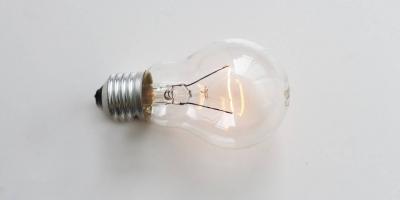Which is better?
The high cost of living coupled with the ever-increasing cost of energy has made Australian homeowners become selective with the type of lighting in their home. You always want to install energy efficient light bulbs to help make your home more energy efficient and reduce the electricity bills.
There a number of things you can do to reduce your energy bills. One such option is to use energy efficient lights. The advances in technology have brought about new innovations in how to light our houses as well as commercial premises.
In the previous years, all we had was the conventional, incandescent bulbs. But now, we have light emitting diodes (LED) and compact fluorescent lamps (CFL) lighting options. Each of them comes with its own advantages and disadvantages, and this implies that homeowners should learn and know how to differentiate between the two.
Typically, LED light bulbs produces light when electricity passes through them. On the other hand, CFL light bulbs produce both heat and light when current flows between the electrodes found at each end of a gas-filled tube. To be more precise, this reaction creates both heat and ultraviolet light. This whole process can be anywhere between thirty seconds to two minutes and this is why it can seem as if a CFL bulb takes a while to achieve a maximum level of brightness.
So between LEDs and CFLs, which one is better? An examination of the following five factors will help us determine the superior choice.
• Energy efficiency
• Lifespan and durability
• Safety
• Versatility
• Affordability
Energy efficiency
Arguably, this is the most important factor to take into consideration when choosing between LED and CFL light bulbs. LED light bulbs have relatively higher efficiency for converting power into brightness. Research has shown that LED light bulbs use only between two to twenty watts of power, which is almost three times less than what their CFL counterparts consume.
What’s more, residential LEDs, especially those that are rated Energy Star, use more than 75% less energy and will likely last twenty-five times longer than CFLs. In fact, it is estimated that in the next decade, the widespread application of LED light bulbs could potentially save about 300 TWh of electricity.
Lifespan and Durability
LED light bulbs are long-lasting and are likely to serve you for an extended period. To be more precise, their lifespan is up to ten times longer than compact fluorescents, and at least forty times longer than typical incandescent light bulbs.
It has also been proven that a well built LED bulb can potentially maintain 70% of its brightness even after fifty thousand uses. On the other hand, the lifespan of their CFL counterparts is between eight to ten thousand hours. After this period, a CFL bulb will become a little dim, ultimately blowing out.
Regarding durability, LED light bulbs don’t feature a filament and this implies that they can withstand rough treatment. Of course, this does not mean they should not be handled with care. They are also solid in nature and are therefore likely to hold up well to either bumping or jarring. The same cannot be achieved with CFL bulbs. In fact, they are extremely fragile and require special handling.
Safety
The issue of safety is an equally important one and must not be ignored. It is imperative to note that CFL light bulbs are filled with toxic mercury vapour, a phenomenon that makes their disposal a highly sensitive issue. In fact, a number of states have stringent CFL disposal requirements.
If you didn’t know, mercury is a dangerous heavy metal and proper handling, cleanup and disposal of these bulbs are critical. If you are currently using CFL bulbs, you are highly advised to consult your local waste management company on how to dispose of your used CFL lighting products. LEDs, on the other hand, do not feature any potentially harmful substance and are therefore eco-friendly.
In addition to the environmental concerns associated with CFL bulbs, they are prone to premature ageing, especially if frequently switched off and on. They also produce lots of heat, with up to 80% of their energy being released in the form of heat.
Versatility
LED light bulbs are versatile lighting options and can be used in a wide range of environments, including living rooms, residential kitchens, bathrooms and hallways. This is because they emit light in a specific direction. As a result, they don’t need either reflectors or diffusers that trap lights. What’s more, you can use them in both warm and cold conditions.
Consequently, CFL bulbs are omnidirectional and this makes them ideal for use in areas where light needs to be projected at complete 360 degrees. They can be used in production facilities, table lamps and perhaps in warehouses. Simply put, they are great for lighting open large spaces.
Affordability
Thanks to their high level of efficiency, LED light bulbs can be costly. However, if you consider the potential benefits that they offer, they are worth your investment. In the long-run LED is a cheaper alternative. We recommend that you install LED in your home due to their modern design and sleek look.
After reviewing and comparing the two forms of light from the five factors, it is clear to see that LED is more superior to the CFL in terms of efficiency, safety, durability, lifespan and versatility. However, the purpose of the light must be considered as CFL lights can provide 360 degrees of light. If you are looking to install LED lights in your home, contact the experts at Gordon’s Powers on 9199 7480. We offer a wide range of electrical services that will help make your home more energy efficient and save you money.










